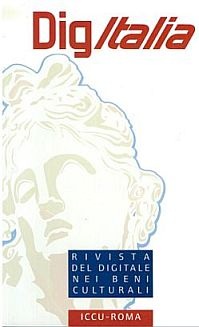Istituti culturali ecclesiastici: una visione generativa, inclusiva, sostenibile e prospettica
Keywords:
Istituti culturali ecclesiastici, BeWeBAbstract
Ecclesiastical museums, archives and libraries contribute to the affirmation of aninclusive, sustainable, ecumenical man-centered society that generates and re-generates value, through perspective visions, aiming at training and the relationship between people, organizations and territories. The BeWeB portal – Beni ecclesiastici in web –, an instrument of knowledge, protection and enhancement of ecclesiastical heritage works as information literacy to foster the growth of a democratic and critical knowledge of the resources made available. BeWeB offers an integrated and cross domain view on ecclesiastical cultural resources joining books, archival holdings, historical artistic and architectural monuments. One of BeWeB objectives is to stimulate the production of content, narration and storytelling starting from the territory, which is the real centre of history, habits, customs and local traditions often related to devotion and worship. This project can engage communities and people that can narrate the life of things through their personal stories. People are the main actors and the real characters of this project and at the same time they become the receivers of project actions. The BeWeB “Percorsi tematici” section is born from the collaboration between the National Office for Cultural Heritage of the CEI and the dioceses and ecclesiastical cultural institutes. In almost 20 years, stories have been published that over time have become narratively more suggestive and technologically more advanced, thus defining an editorial method that, recently, has allowed us to create an advanced tool for creating thematic routes.The aim of Roero Coast to Coast project, organized and supported by Alba’s Diocesan Museum, is to add value to and network together the system of confraternities and the castles in the Roero, contextualizing them within the landscape and in relation to the people who bring the area alive, with the purpose of improving tourism services and reinforcing the local identity. The project is intended to serve as an informational system themed and including a narration of the local area thanks to an interactive guide. Actions are underway to involve the local community in the promotion of tourism services, partly already represented by the cultural volunteers of the Volontari per l’Arte interdiocesan network, as well as social inclusion and cultural welfare. The storytelling aspect is being developed jointly with the community through a call to local residents to promote the intangible culture of the confraternities thanks to the recovery of oral testimonies, photographs and films.
Downloads
Downloads
Published
How to Cite
Issue
Section
License
Copyright (c) 2020 DigItalia

This work is licensed under a Creative Commons Attribution-ShareAlike 3.0 Unported License.
The Authors publishing their contributions on this journal agree to the following conditions:
- The Authors detain intellectual property rights of their work and transfer the right of first publication of the work to the journal, under the following Licence: Attribution-ShareAlike 3.0 Italy (CC BY-SA 3.0 IT). This Licence allows third parties to share the work by attributing it to the Authors and clarifying that the work has been first published on this journal.
- Authors can sign other, non-exclusive licence agreements for the dissemination of the published word (e.g. to deposit it in an institutional archive or publish it in a monography), provided that they state that the work has been first published on this journal.
- Authors can disseminate their work online (e.g. in institutional repositories or on their personal websites) after its publication, to potentially enhance knowledge sharing, foster productive intellectual exchange and increase citations (see The Effect of Open Access).






